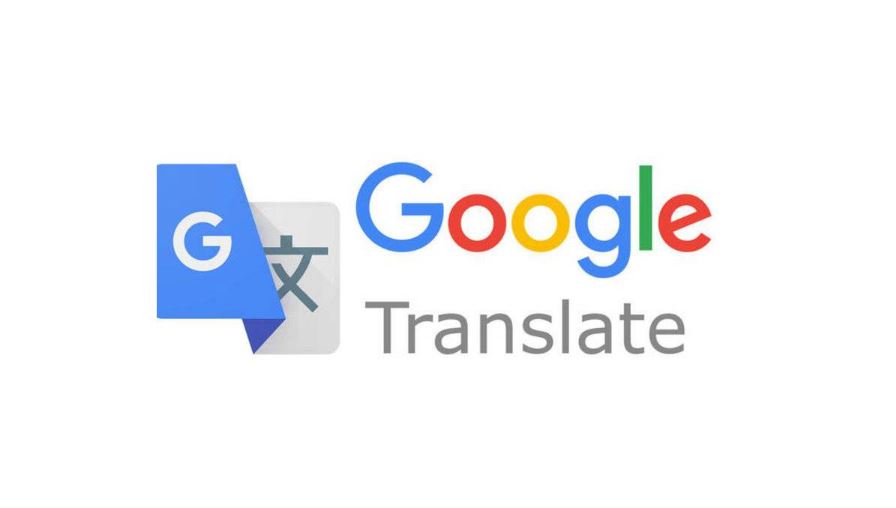How does Google Translate work
17th April 2024
Jake Hopkins
How does Google Translate work? 10 functions you probably don't know
Are you curious about how Google Translate works and the features it offers?
This article will explore the ins and outs of Google Translate, from statistical machine translation to speech translation.
Find out how this popular tool can help you translate text, websites, documents, and even conversations. Discover the languages supported, accuracy levels, limitations, and potential future improvements.
Uncover the hidden gems of Google Translate that you may not be aware of!
What Is Google Translate?
Google Translate is a widely-used language translation tool developed by Google that leverages artificial intelligence and neural networks to provide accurate translations between different languages. It helps break down language barriers and promotes globalization by enabling users to communicate effectively regardless of their native language.
With over 100 languages supported, Google Translate has transformed the way people interact and share information across the globe. Its inception dates back to 2006 when Google acquired a translation software company, Quest Visual, and incorporated its technology to enhance the accuracy and speed of translations.
Since then, continual advancements in neural networks and AI have propelled Google Translate to become one of the most reliable tools for cross-cultural communication. Its ability to learn and adapt from vast amounts of multilingual data ensures that translations are not only grammatically correct but also culturally sensitive.
How Does Google Translate Work?
Google Translate operates using advanced machine learning techniques that involve text processing, language models, bilingual dictionaries, and natural language processing algorithms to accurately translate content between different languages. It relies on grammar rules, language pairs, and extensive training data to enhance language accuracy.
The two primary methodologies utilized by Google Translate for translation are statistical machine translation (SMT) and neural machine translation (NMT).
In statistical machine translation, the system translates text based on statistical models learned from vast amounts of bilingual text. On the other hand, neural machine translation uses artificial neural networks to process and translate text with deeper understanding and context.
Through continuous analysis of context and language patterns, Google Translate strives to improve language fluency and accuracy for its users.
Statistical Machine Translation
Statistical Machine Translation in Google Translate involves analyzing large amounts of training data to generate accurate translations. By statistically determining the best word conversion based on patterns in the data, it aims to improve language accuracy and fluency.
Google Translate leverages language models to understand the context and structure of sentences, enhancing the quality of translations. Through statistical analysis of the training data, the system is able to learn the relationships between words and phrases in different languages, allowing for more precise and natural-sounding translations. This method enables Google Translate to continuously adapt and improve its translation capabilities, making it a valuable tool for users seeking to communicate across language barriers.
Neural Machine Translation
Neural Machine Translation in Google Translate harnesses artificial intelligence and neural networks to understand and translate language nuances and idiosyncrasies more effectively. It focuses on context analysis and grammar rules to improve translation accuracy.
By taking into account the subtle nuances of languages and the evolving structures of expressions, this technology can provide more accurate and natural translations. The neural networks within Google Translate work by analyzing vast amounts of bilingual text data to learn the intricacies of different languages, enabling it to generate more contextually relevant translations. This approach considers not just individual words, but also the overall meaning and intent behind the text, resulting in translations that feel more authentic and coherent.
Phrase-Based Machine Translation
Phrase-Based Machine Translation in Google Translate breaks down sentences into phrases for translation, using a language model to detect relevant phrases and segment sentences accurately. It focuses on translating smaller units to maintain accuracy.
By analyzing these phrases, Google Translate can better handle the nuances of various language structures and idiomatic expressions. This approach also allows Google Translate to efficiently process different language pairs, improving the overall quality of translations.
The ability to break down sentences into manageable chunks enables the system to maintain context and coherence in translations, resulting in more precise and natural-sounding output for users around the world.
What Are the Features of Google Translate?
Google Translate offers a range of features including text, website, speech, camera, and offline translation capabilities. It supports voice input for convenient translation services on the go.
Voice input functionality in Google Translate allows users to simply speak into their device's microphone, making it ideal for hands-free translation tasks.
The camera feature enables users to snap a picture of text for instant translation, which is particularly useful when dealing with signs, menus, or documents in a foreign language.
The offline mode allows for translation without needing an internet connection, making it handy for travelers or those in areas with limited connectivity.
Text Translation
Text Translation in Google Translate enables users to input text in one language and receive accurate translations in another. It includes language detection and quality assessment features to enhance translation reliability.
When a user inputs text into Google Translate, the software utilizes advanced algorithms to automatically identify the language being used. This is crucial for ensuring that the translation is accurate and relevant. The system then applies sophisticated linguistic analysis to determine the context, grammar, and syntax of the text.
Through a combination of machine learning and rule-based methods, Google Translate can provide translations that capture the nuances and subtleties of the original text. This meticulous process helps maintain high-quality translations across numerous languages, making Google Translate a valuable tool for communication across barriers.
Website Translation
Google Translate's Website Translation feature allows users to translate entire web pages into different languages. It offers options for language customization and provides tools for improving translation quality.
Users can easily switch between languages to view web content, making it convenient for those who access websites in multiple languages. Google Translate allows users to provide feedback on translations, which helps enhance the overall accuracy and quality of translations over time. By offering a seamless and user-friendly browsing experience, Google Translate's Website Translation feature plays a crucial role in breaking language barriers and promoting cross-cultural communication.
Document Translation
Document Translation in Google Translate facilitates the translation of various documents with a focus on maintaining language fluency and preserving the original document structure. It is designed to preserve the essence of the content.
By using the document translation feature, users can accurately convert texts while ensuring that the context and style of the original document are seamlessly transferred. This tool is particularly beneficial for businesses, students, researchers, and individuals who need to communicate or work with content in multiple languages without losing the nuances of the original text. Google Translate's ability to retain the layout, formatting, and overall look of the document helps in preserving the professional appearance and authenticity of the translated material.
Speech Translation
Google Translate's Speech Translation feature allows real-time translation of spoken words, providing a language confidence score to indicate the accuracy of translations. It supports seamless multilingual communication.
By leveraging cutting-edge technologies such as machine learning and neural networks, Google Translate processes the speech input by recognizing words and phrases, translating them instantly into the desired language. The system then assigns a confidence score to each translated text, indicating the probability of accuracy.
This feature plays a crucial role in enabling individuals to communicate effectively across language barriers, fostering understanding and connection on a global scale. The real-time capabilities of Google Translate's Speech Translation feature empower users to engage in fluid conversations regardless of linguistic differences, breaking down communication barriers in diverse social and professional settings.
Camera Translation
Camera Translation in Google Translate enables users to translate text captured by a camera in real-time. It offers visual and augmented reality translation features for enhanced language understanding.
By utilizing the camera feature on a smartphone or tablet, users can simply point the device at foreign text, and Google Translate will instantly display a translated version. This technology not only assists with individual words but also allows for the translation of full sentences, menus, signs, and more. The augmented reality integration enhances the user experience by overlaying translations onto the original text seamlessly, providing a clearer understanding of the context. This innovative tool has transformed the way people navigate through foreign languages and cultures.
Handwriting Translation
Handwriting Translation in Google Translate allows users to input text by hand for translation. It serves as a useful language tool by providing resources for handwritten content translation.
This feature operates by recognizing the characters drawn by the user and converting them into the desired language, making it easier for those who prefer writing over typing.
By offering this capability, Google Translate expands its accessibility to a wider audience, including individuals who may have difficulty typing or need to translate handwritten notes quickly.
The accuracy of the translation depends on the legibility of the handwriting, but overall, this tool enhances the versatility of Google Translate as a comprehensive language solution.
Conversation Mode
Google Translate's Conversation Mode facilitates real-time translation during conversations, aiding in language understanding and preserving individual language identities. It enables seamless communication across language barriers.
By simply speaking into the app, Conversation Mode instantly translates the spoken words into the selected language, allowing users to engage in smooth and spontaneous dialogues. This feature is especially beneficial in multicultural settings, where individuals speaking different languages can interact without the hindrance of language barriers. This not only fosters better understanding but also promotes inclusivity and respect for diverse linguistic backgrounds, thus contributing to the preservation and celebration of various cultural identities.
Offline Translation
Offline Translation in Google Translate allows users to translate text without an internet connection, enhancing language accessibility and showcasing the advancement in language technology.
This offline functionality is particularly beneficial for travelers or individuals in areas with limited internet access, ensuring they can easily communicate in different languages. By utilizing offline translation, users can overcome language barriers and access information with ease, regardless of their location. This innovative feature demonstrates the evolution of language technology, as Google Translate continues to improve its capabilities to make language more accessible and connected globally.
Auto-Detect Language
Google Translate's Auto-Detect Language feature identifies input languages automatically, adapting to language evolution and expanding language pairs for accurate translations. It streamlines the translation process.
By leveraging advanced algorithms, the Auto-Detect Language feature in Google Translate constantly updates its database to stay current with emerging languages and dialects. This adaptive capability ensures that users receive precise translations even for less commonly spoken languages.
As the tool learns from user interactions, it fine-tunes its language recognition abilities, improving the overall translation experience. This continuous learning process enables Google Translate to meet the demands of a diverse and dynamic linguistic landscape, enhancing its effectiveness in bridging communication barriers.
10. Dictionary and Synonyms
Google Translate's Dictionary and Synonyms feature provides definitions and alternative word choices to enhance language understanding, proficiency, and address language nuances. It serves as a valuable resource for language learners.
By utilizing this feature, users can not only look up the meanings of words but also explore various synonyms that help convey specific shades of meaning or tone. This functionality aids in improving vocabulary, allowing individuals to express themselves more precisely in different contexts. The integrated dictionary further assists in grasping the subtleties of language, making translations more accurate and contextually relevant. Google Translate's Dictionary and Synonyms feature plays a crucial role in broadening linguistic skills and fostering a deeper comprehension of languages.
What Languages Does Google Translate Support?
Google Translate supports a wide array of languages through its language pairs, offering multilingual support and options for language customization. It caters to diverse linguistic needs.
The platform's language repertoire spans over 100 languages, enabling users to easily translate text, documents, and even websites across various language combinations. Google Translate allows users to adjust translations according to context or tone, providing a more tailored communication experience.
Whether someone is navigating a foreign website, deciphering a complex document, or simply engaging in multilingual conversations, Google Translate serves as a reliable tool for overcoming language barriers and fostering cross-cultural communication.
How Accurate Is Google Translate?
Google Translate has significantly improved its accuracy over the years, employing language quality assessment mechanisms to address language barriers and enhance translation precision. It strives for high translation quality.
One key aspect of Google Translate's approach to ensuring reliable translation is the use of machine learning algorithms that continuously analyze vast amounts of multilingual data to refine translation models. These algorithms help in detecting and correcting errors, enhancing the overall accuracy of translations.
Google Translate regularly updates its language databases to include the latest linguistic nuances and vocabulary, enabling more contextually appropriate translations. The platform also employs human linguists and native speakers to verify translations and provide feedback, further enhancing the quality and reliability of its language services.
What Are the Limitations of Google Translate?
While Google Translate is a powerful tool, it may face limitations in capturing complex language fluency and nuances, especially in idiomatic expressions or specialized terminology. It may struggle with context-specific translations.
This challenge arises because Google Translate primarily relies on algorithms to convert text, which can sometimes result in literal translations that do not fully convey the intended meanings. Cultural nuances, tone, and subtle variations in language usage can often be lost in translation, leading to inaccuracies or misunderstandings. Grammar structures and syntactical differences between languages can further complicate the translation process, affecting the overall fluency and coherence of the translated text.
How Can Google Translate Improve in the Future?
To enhance its services, Google Translate can focus on improving language accuracy, customization options, and the underlying language technology. It should strive to adapt to evolving language structures and user needs.
- One area of improvement would be making the translations more contextually accurate. By incorporating advanced AI algorithms and machine learning techniques, Google Translate could better understand nuances in language, leading to more precise and natural-sounding translations.
- Providing users with the ability to customize translations based on specific industry terminology or personal preferences would greatly enhance the overall user experience.
- Integrating real-time language updates and leveraging neural machine translation capabilities would be crucial to keep pace with the ever-changing linguistic landscape.















